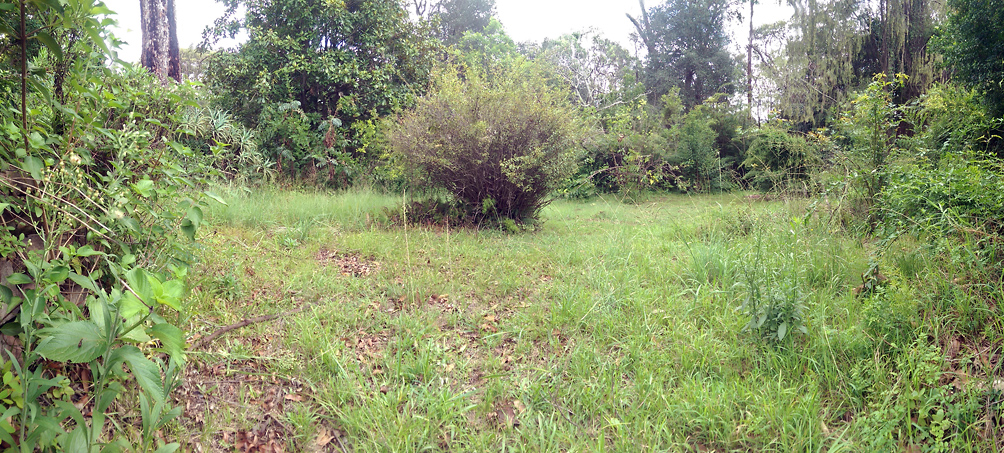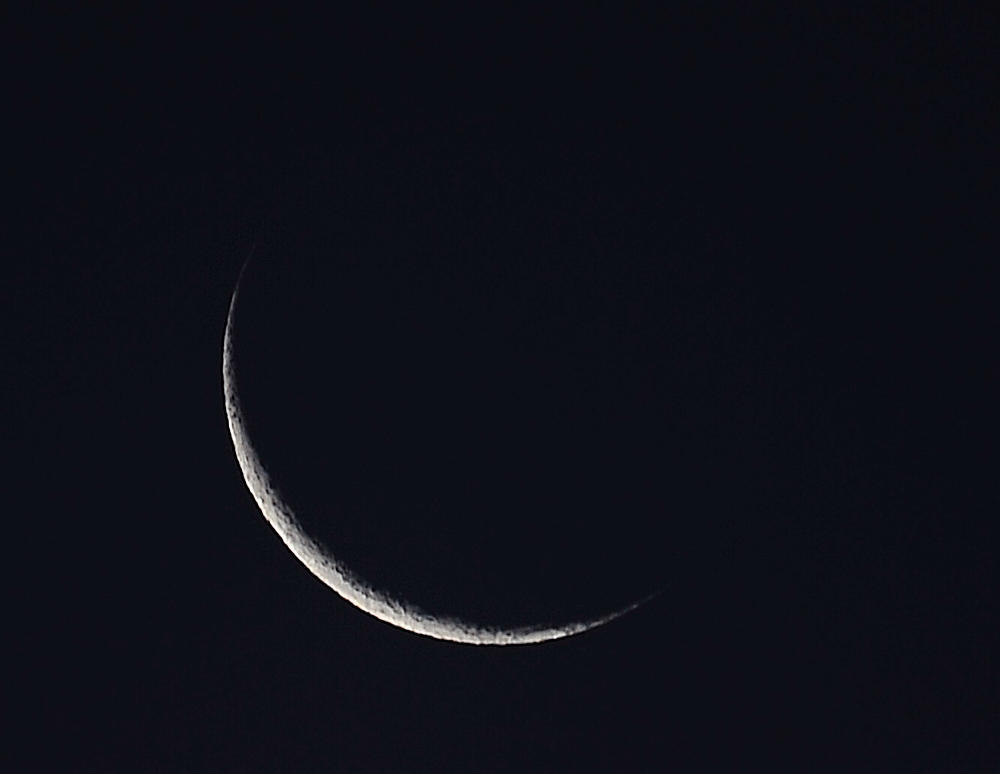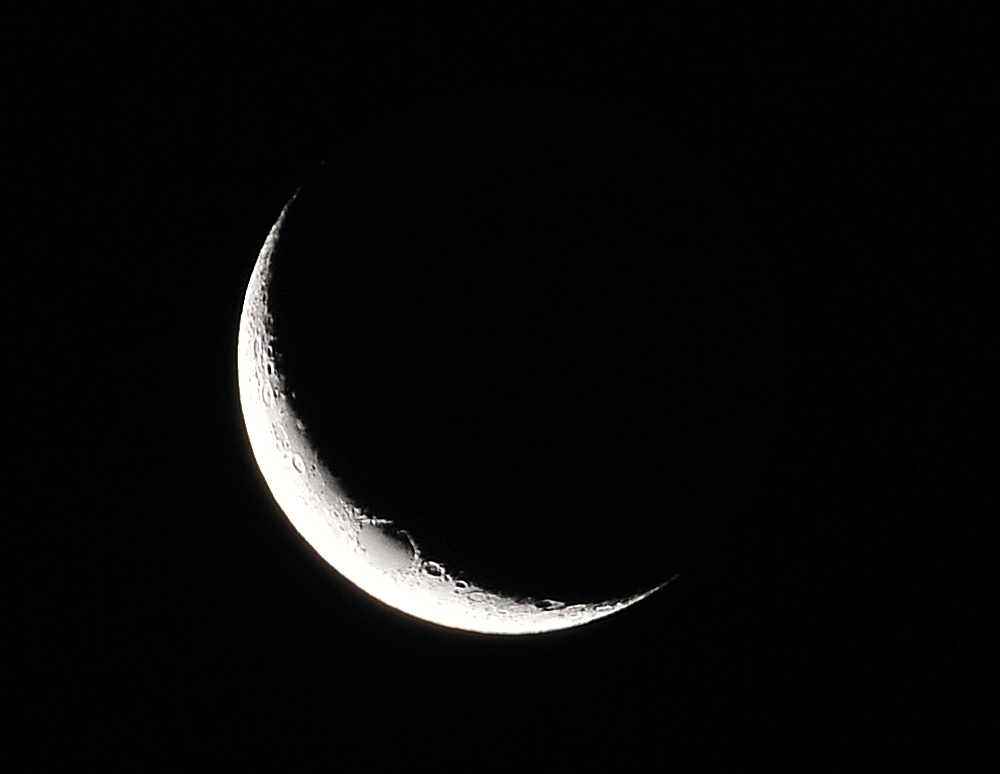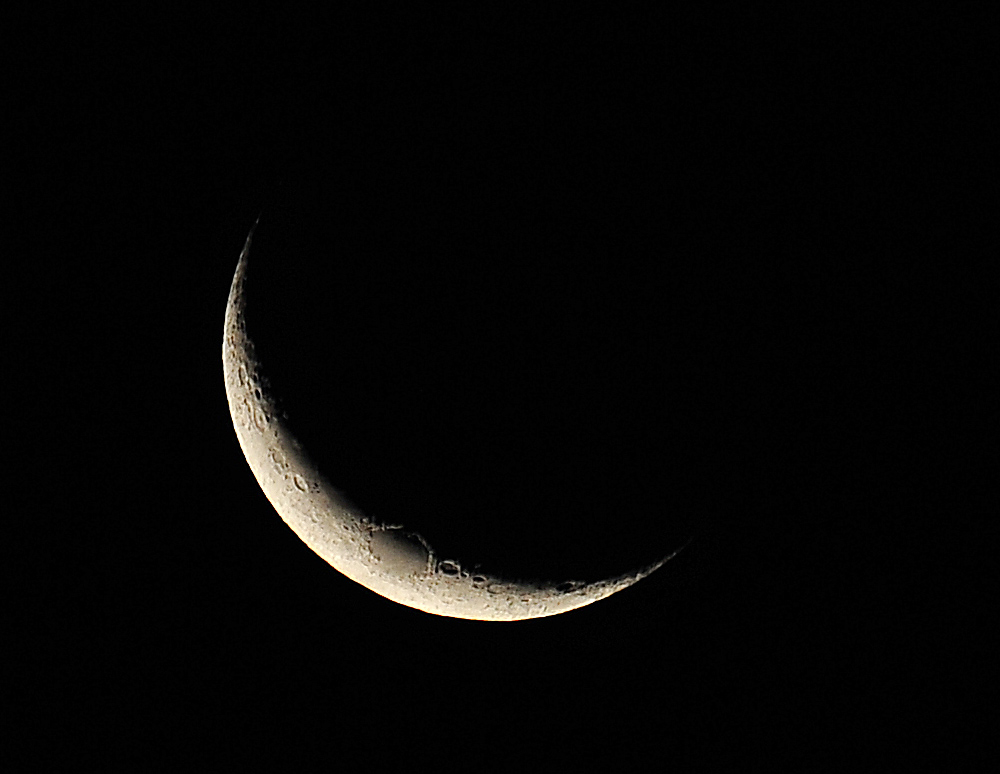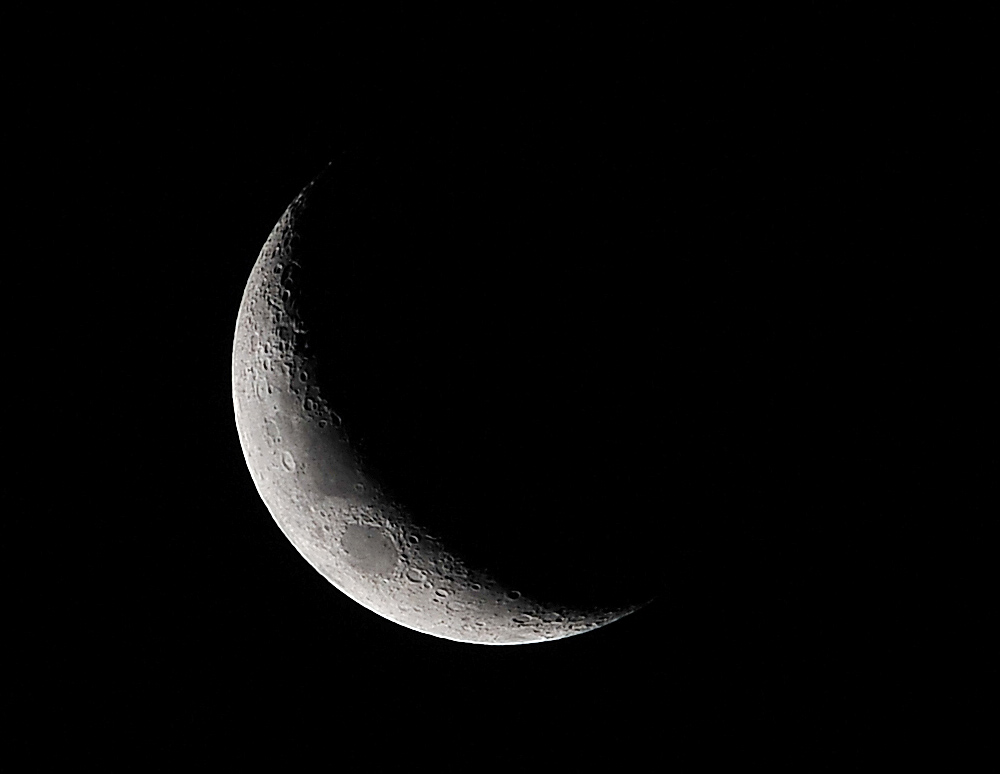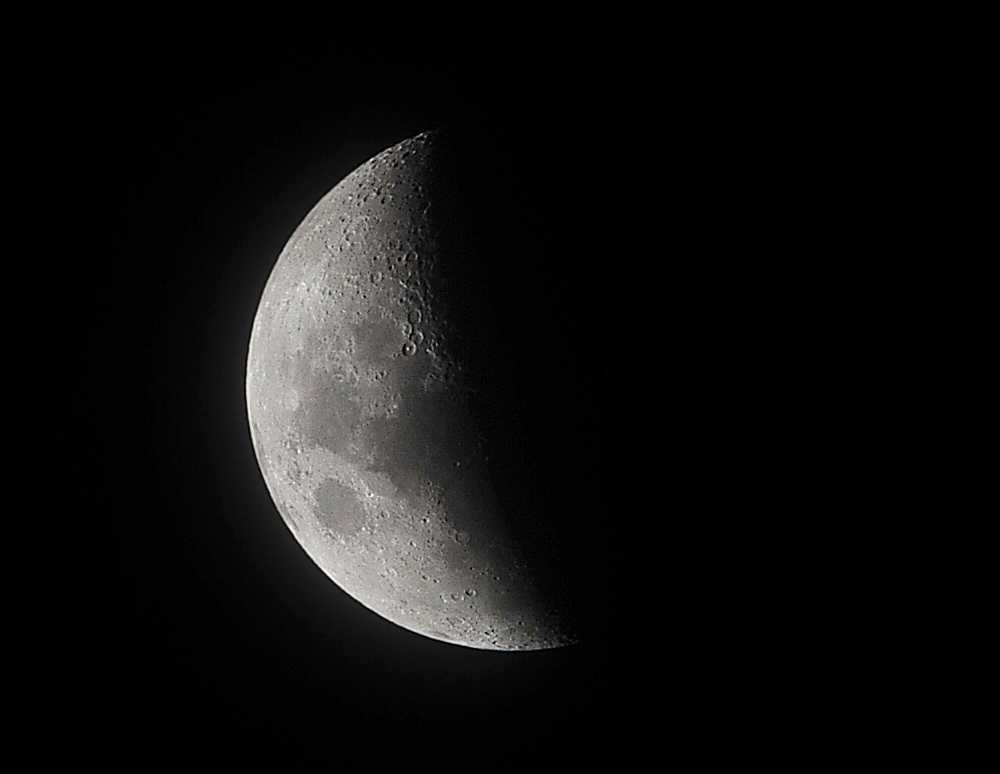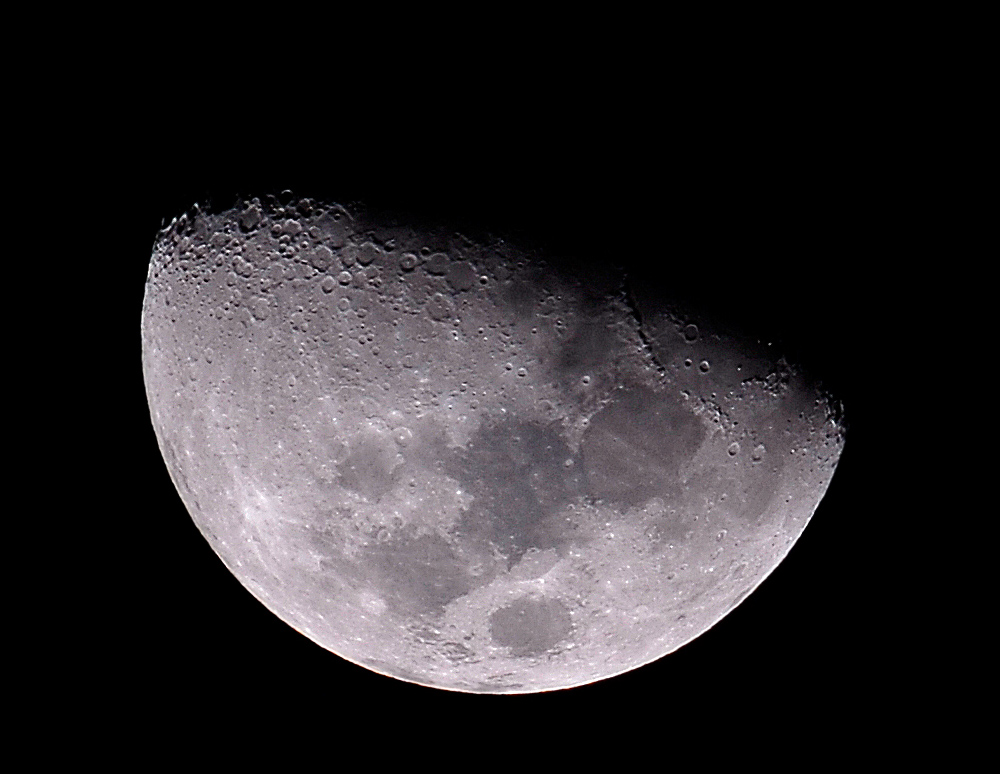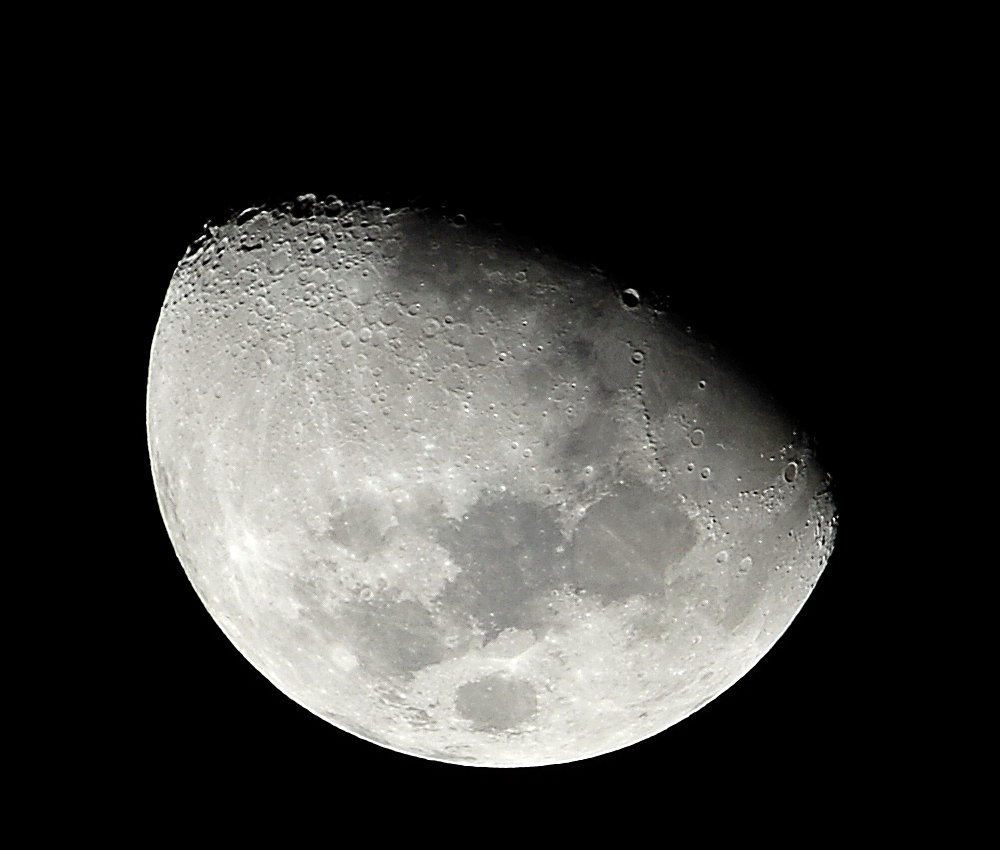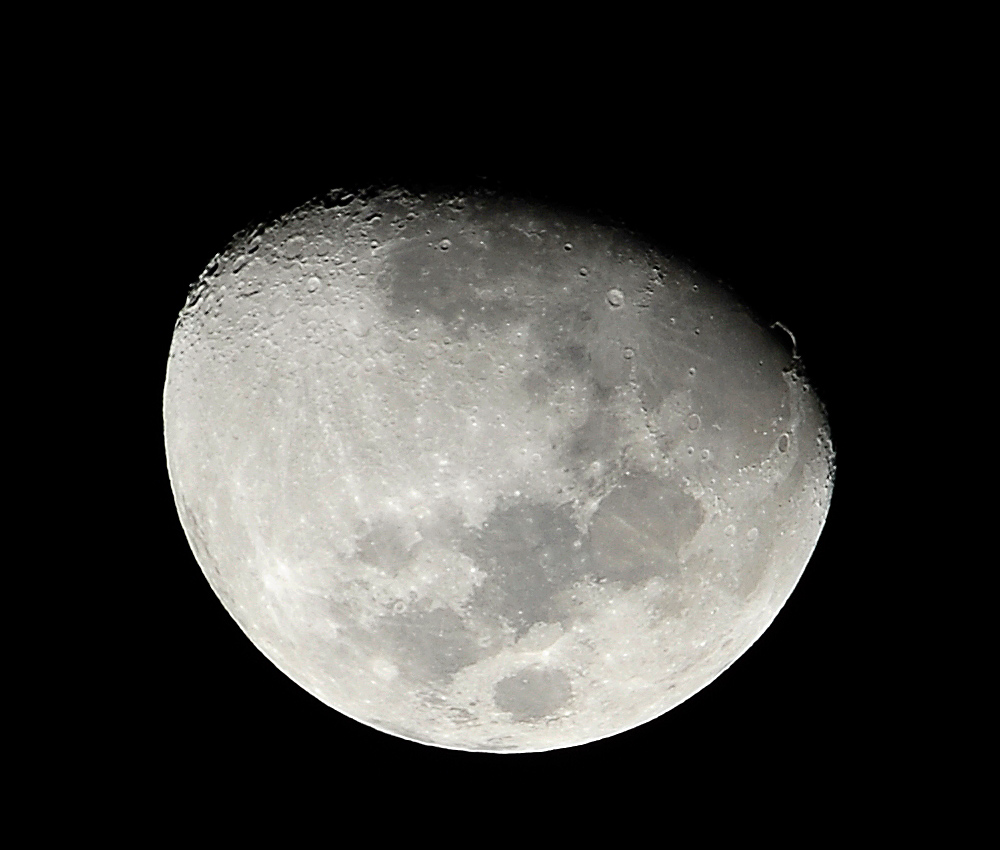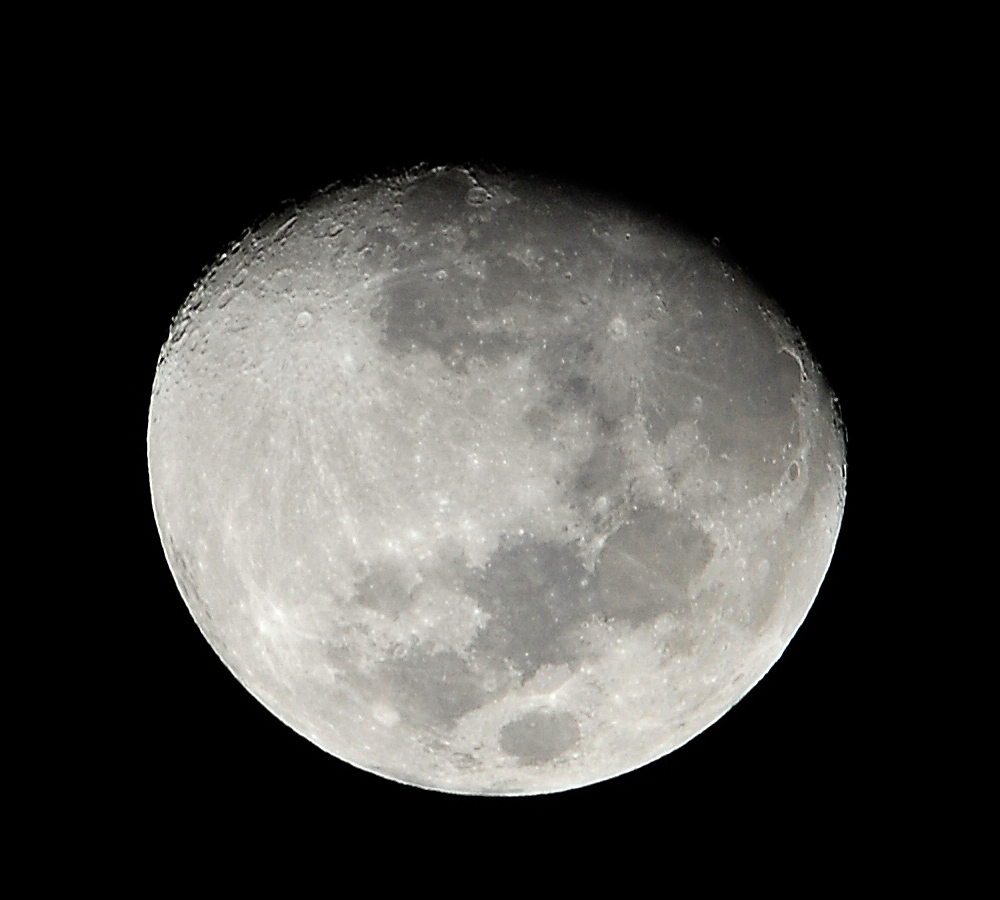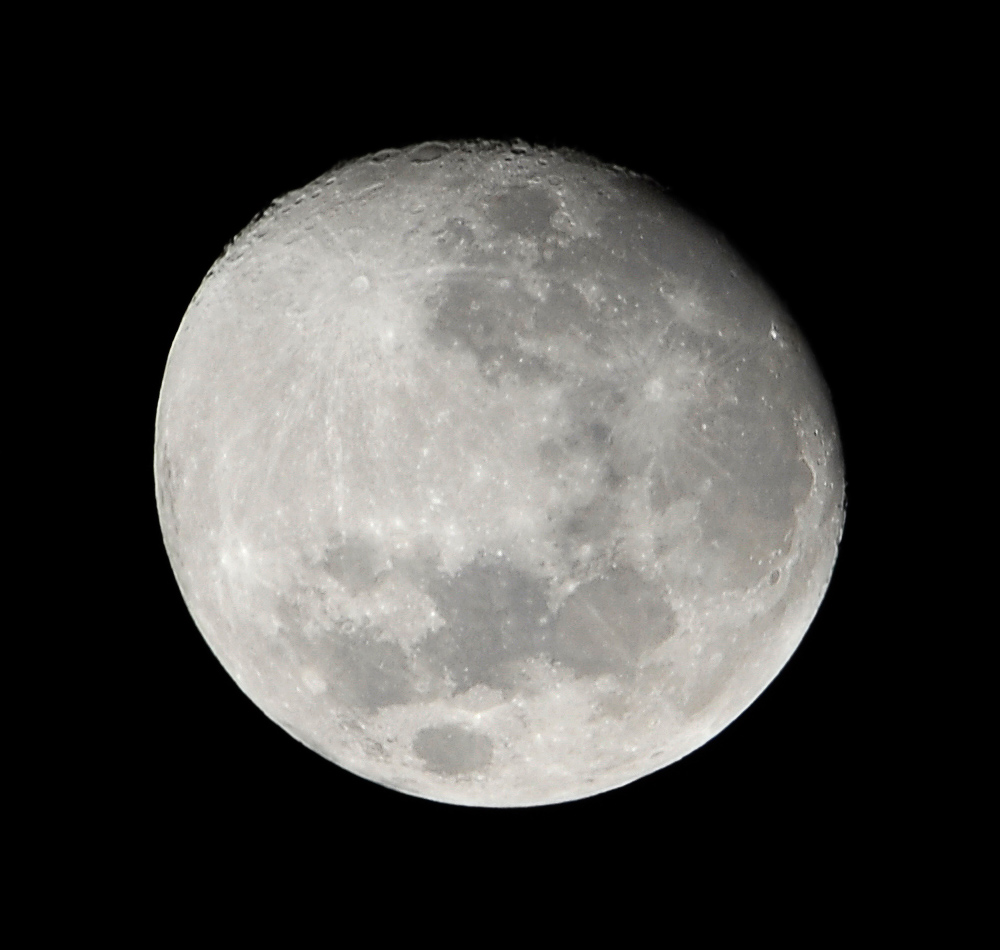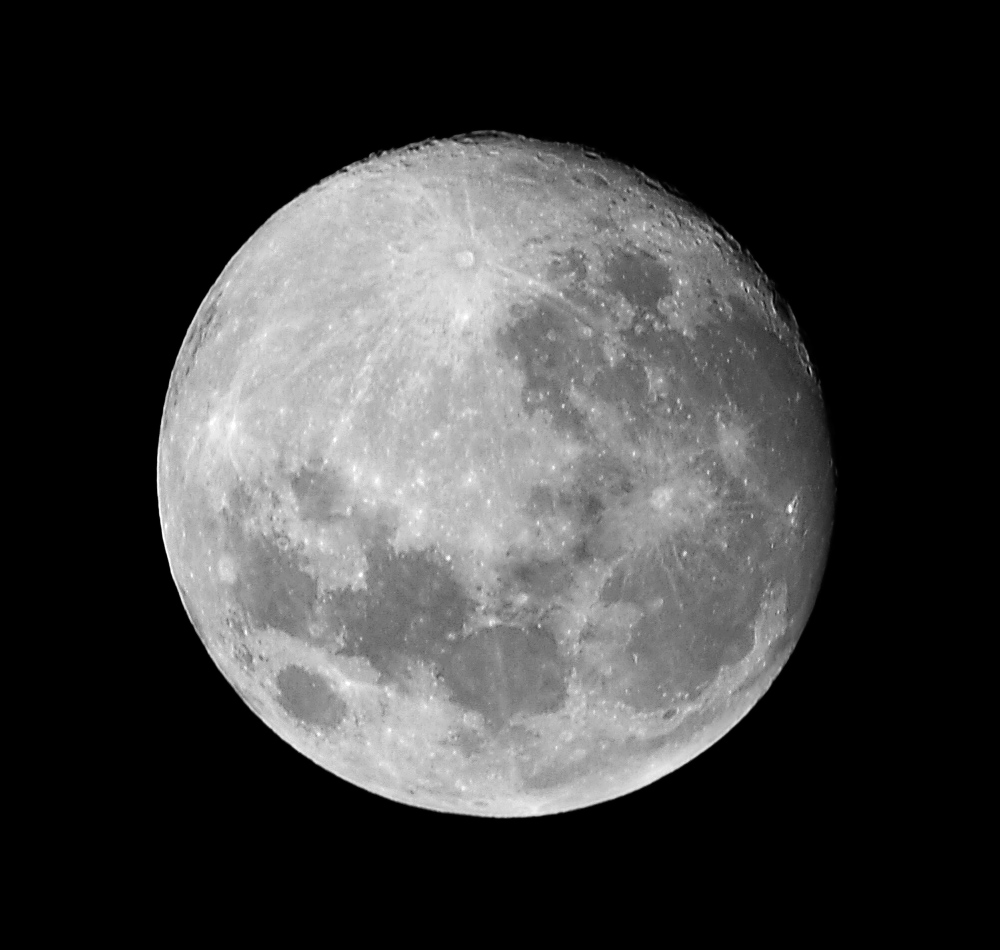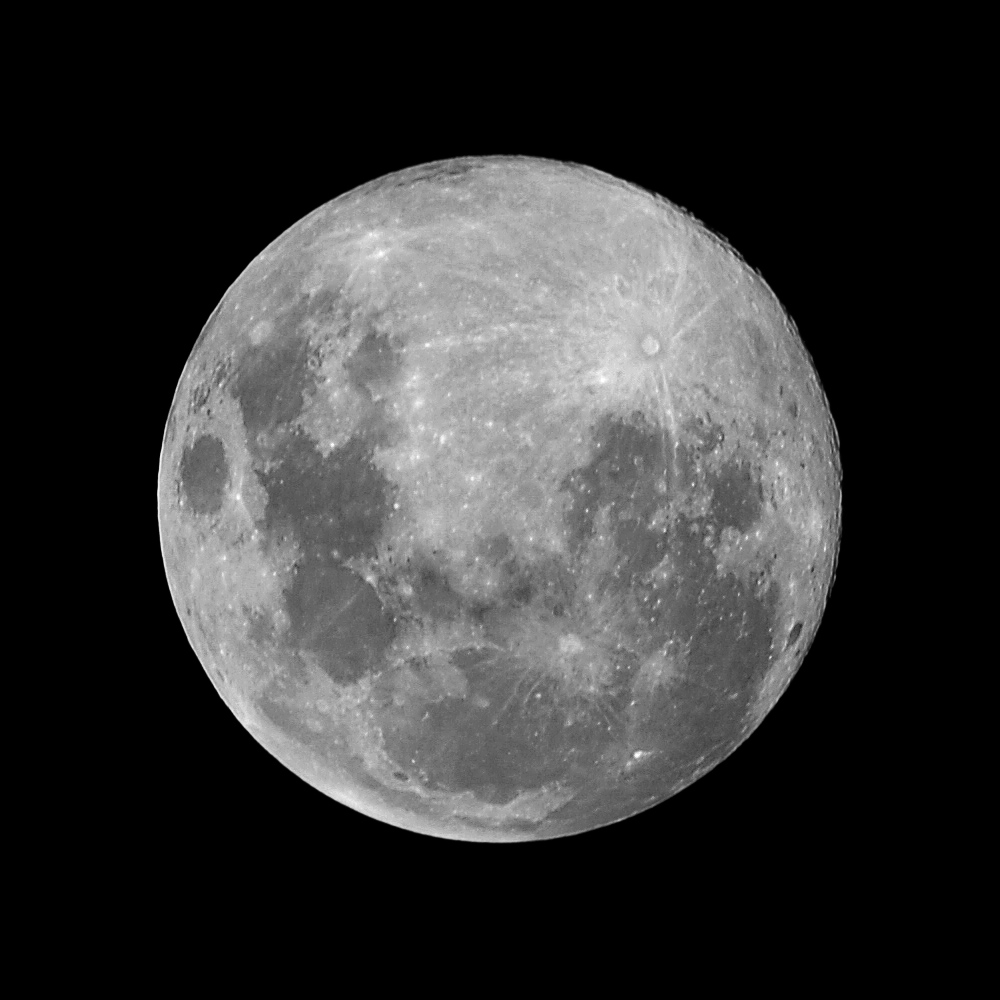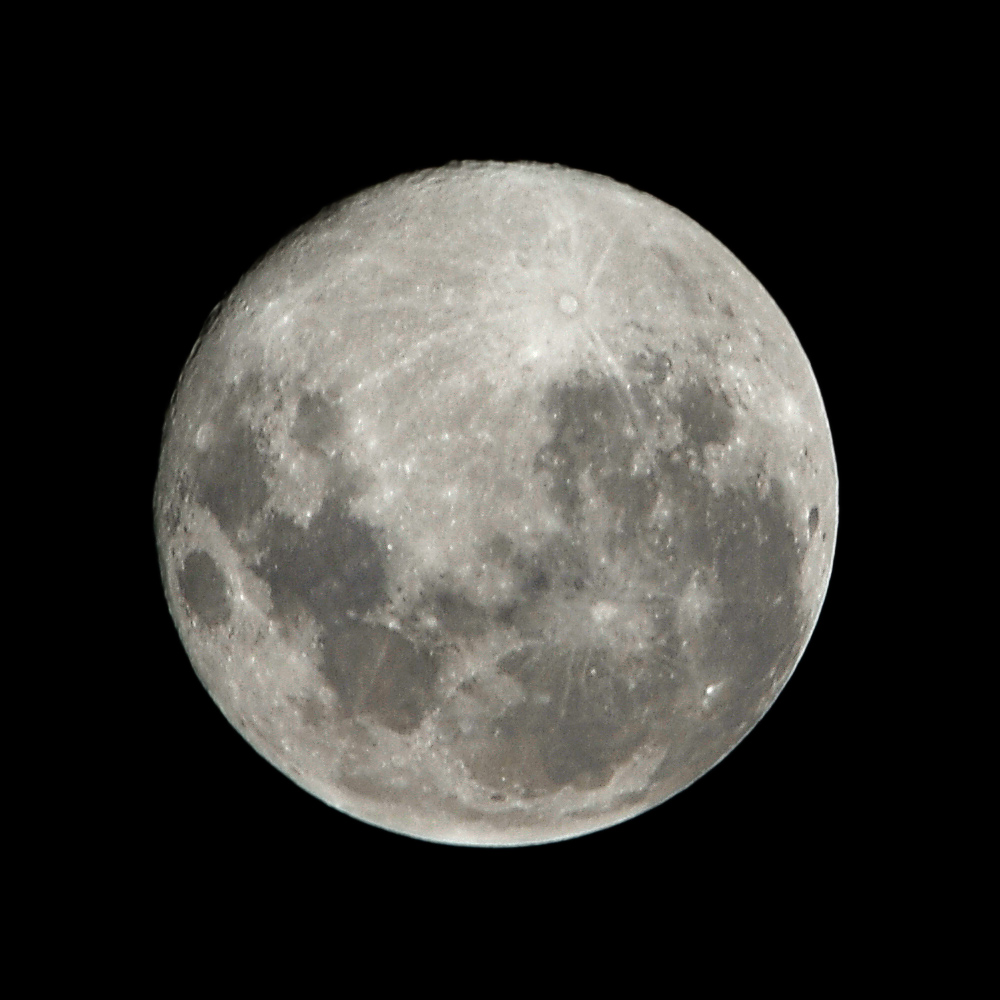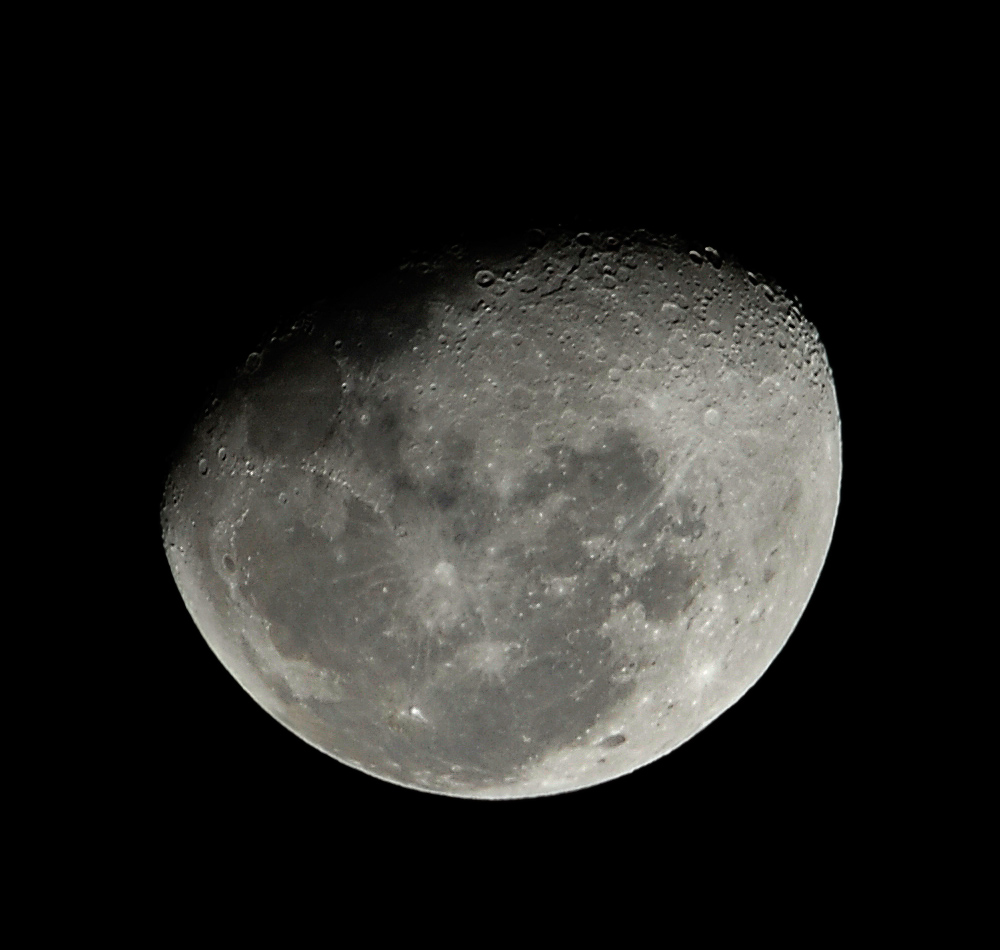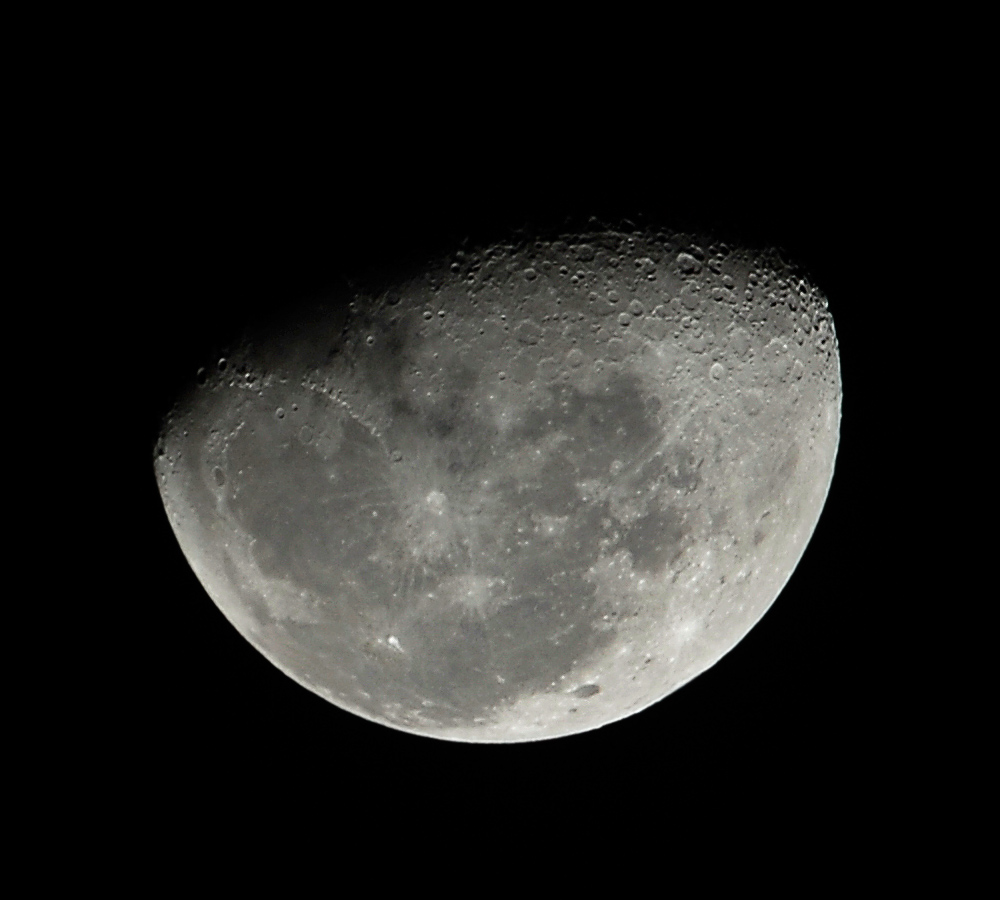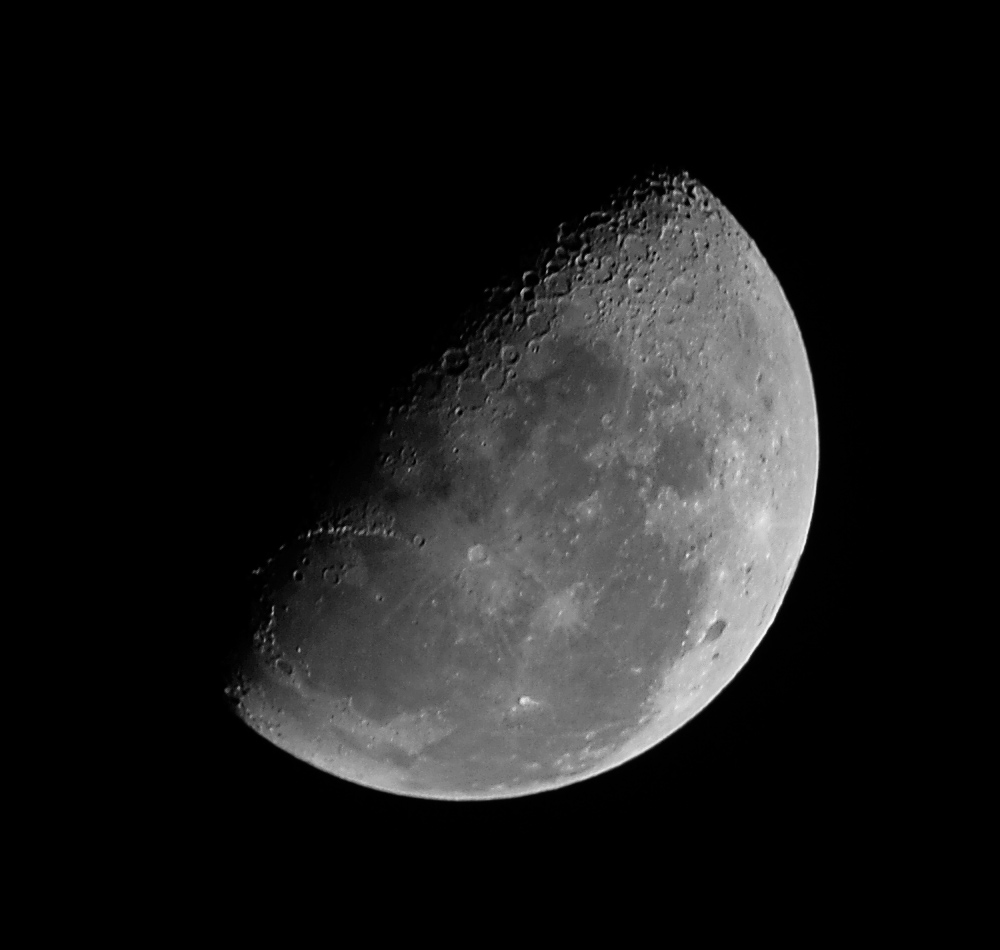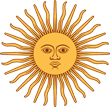
|
||||||||||||||||||||
Learning the Phases of the MoonAncient people were very familiar with the moon, including knowledge of its phases and where it would be in the sky at different times of the night. They used this knowledge to count seasons, months, and years, to know the approximate time during the night, and to find direction and navigate without needing modern technology. This page demonstrates how to learn the phases of the moon by looking at the moon every night (or nearly every night) for a month. The journal is a continuation from the page Finding a Secret Spot. There will be some overlap between days 51 and above of the secret spot journal and the learning of the phases of the moon. My homework assignment for this web page is that I've got to try to photograph the moon every night (or at least nearly every night) for the next month. The BasicsThe moon rises in approximately the East, and sets in approximately the West, just like the sun. It takes almost the same amount of time to travel across the sky as the sun does. That is, about six hours from rising to its highest point in the sky, and then about another six hours to set. And then approximately another 12 hours of being out of sight underneath the ground before it rises again. Having said that, because the moon is also going around the Earth, it appears to move slightly slower across the sky than the sun does. On average, the moon takes 24 hours and 49 minutes to be back to the same place in the sky relative to the background stars. Which is about 50 minutes slower than the sun. The main visible effect of this is that each day, the moon will be (on average) about 50 minutes behind where it was the day before, compared to where the sun is. Your HomeworkIf you want to learn the phases of the moon, your homework is to go outside around sunset from 1 or 2 days after a new moon, and then each night for the next two weeks. Look at the moon and notice where it is in the sky compared to where the sun is. Notice how each night the moon is further back compared to where the sun is. Also notice that the part you can see lit up is getting bigger (more full). After the two weeks are up, the moon will not rise until after sunset. You can continue the exercise for the next two weeks after that if you wait for the moon to rise, and notice when it rises and what shape it looks like. For the final days before the next new moon it will not rise until the early hours of the morning, so you will need to get up quite early to see it rise then. There are new moons on Wednesday 26 April 2017, Thursday 25 May 2017, Friday 23 June 2017, Sunday 23 July 2017, Monday 21 August 2017, Wednesday 20 September, etc. Where to LookOn the first one or two days after a new moon, look for the moon low in the Western sky when the sun is setting, and for a short time after sunset. This the best time of the month to begin learning the phases of the moon. Then keep going back out each night, at around sunset, and notice where the moon is, and how big it is. On the first sunset after a new moon, you may or may not see the moon at all. You should be able to see it on the second sunset after a new moon (if there are no clouds in the way). It will be a littlebit higher in the sky than the sun. You can start doing this exercise on any day, it doesn't have to be right after a new moon. However if you do start it right after a new moon it's easier to learn, since it's easier to remember the whole cycle when you have a clear reference point for the beginning of the moon's monthly cycle. Also if you don't start right after a new moon, you'll have to find where the moon is, as it will be in a different place in the sky. At some point I may split the moon phases page and the secret spot journalling into two separate pages, since they are quite different topics, but at least for now they are together. If you want to combine these topics yourself in your practical work, you can look at the moon while at your secret spot. You could use your unaided eyes, like ancient people did, or you could use binoculars like the ones used for birdwatching. You could even use a telescope if you have one (or can borrow one). A small cheap one is fine. In fact the moon is by far the best astronomical object to look at in a small cheap telescope. BinocularsWith binoculars, 7x50 and 10x50 are probably the best two sizes to use. I would pick 10x50 over 7x50 though either is fine. The first number is the magnification. Anything more than about 10 will shake the image too much, unless you use a tripod in which case a higher magnification could be used. The second number is the size in millimetres of the objective lens, the large lens at the end away from your eyes. The bigger the lens, the more light gets in and the brighter and clearer the image will be. Smaller lenses like 35mm are also fine. Again, if you have a tripod you could use larger ones, like 20x80. If you have something to lie down on, like the ground (if not too wet etc.) or a recliner chair, you can rest your elbows and upper arms on the ground (or chair back) while holding the binoculars, which will give you a much more stable image and probably be a much more comfortable position. You Secret SpotFrom the secret spot page: Your secret spot is somewhere you can sit alone in nature and just be. At it's simplest, all you have to do is go into the garden (or somewhere outside that you like) and just sit there for 15 minutes (more is okay), every day. Or nearly every day. It's one of those things which is much more useful than it seems like it would be. It's also suprisingly much harder to do than it seems like it would be.
Day 51 - Friday, 28 April 2017 - 2 Day Old MoonToday just after I was at my secret spot I noticed the moon looked very close to new. I always love looking at the moon when it's really thin in the sky like this, it makes me feel happy and excited like it's the beginning of good new things. When I saw it this month, I got the idea to try to photograph it every night and journal it, and try to explain how the phases work. I took this photo which was the best of several, propping up the 500mm long Sigma lens on a handrail over a balcony.
The moon goes around the earth and back to the same place in the sky compared to where the sun is once every 29 days, 12 hours and 44 minutes, on average. Which is very close to 29 and 1/2 days. This is called a lunar month. (Also called a synodic month or a lunation). Because the moon's orbit isn't a perfect circle (it's an ellipse, which is a type of oval) the duration of the lunar month can vary by up to about 6 hours either side of this average length. I looked up online to see that the last new moon occurred at 10:16 pm on Wednesday the 26th of April. A "new" moon is when the moon is as close as it will get in a given lunar month to directly in line with the sun in the sky. Which also means it's almost completely dark and we can't see it. Because the orbits of the earth around the sun, and the moon around the earth, are not in the same perfectly flat disc, the moon and the sun don't usually line up exactly each month. If they did, the moon would pass directly between the earth and the sun, blocking the sun from being seen. On the rare occasions when this happens, it's called an eclipse of the sun. This photo was taken at 5:45 pm, which means this moon is a few hours short of two days old. When I took the photo it was fairly low in the Western sky, though perhaps if I'd noticed yesterday I could have got an earlier photo (i.e. of a one day old moon). Looking up times for Sydney, sunset today was at 5:17 pm and the moon set at 6:57 pm. So the roughly two day old moon is setting roughly two hours after the sun. (When the moon was new, two nights ago, it would have set at close to the exact same time as the sun). If you want to learn the phases of the moon, your homework is to go outside around sunset for the next two weeks. Look at the moon and notice where it is in the sky compared to where the sun is. Notice how each night the moon is further back compared to where the sun is. Also notice that the part you can see lit up is getting bigger (more full). Because there are 24 hours in a day, and about 29.5 days in a lunar month, the moon will move eastward in the sky by about an hour each day compared to the position of the sun. If you want to be more precise, it will move (24 divided by the length of the lunar month in days) hours each day. Or about 24 / 29.5 hours = 0.81 hours = 0 hours 49 minutes each day. Which is almost the same as saying that the moon will set about 49 minutes later every day. (Or rise that much earlier, but at this stage of the lunar month it's easier to observe the moon in the evening as the sun is setting, and the moon will be setting shortly afterwards). It's not exactly the same, because usually the moon and sun will set in different places in the sky. For example in summer, the days are longer than the nights, and the sun's path in the sky is long. A new moon in summer will be close to the sun and follow a similar path. However a full moon in summer will be opposite the sun in the sky, and follow a similiar path to that which the sun does in winter — a much shorter path where it rises later and sets earlier. The result of all this is the exact amount that the moon sets later than the sun each day is complicated, and can be shorter or longer than 49 minutes. If you're interested in the technical side of the photography, the photo was taken at ISO 200. Which is a measure of how light sensitive the sensor in the camera is, lower numbers mean less light sensitive, which means you need a slower shutter speed, and the sensor produces a clearer image, if everything else is equal, than higher ISO numbers which can be grainy). Using manual mode on the camera, with an exposure time of 1/50th of a second, and an aperture setting of f/6.3 which is the widest this lens can go at 500mm. I tried a few other combinations of aperture and shutter speed and this was the clearest image with the most detail. I didn't try experimenting with the ISO setting which might also have helped. For example, at ISO 400 I could have used a narrower aperture, which usually means a clearer image than when the aperture is wide open, although the higher ISO setting would introduce a little more image noise. Since this camera, a Nikon D700, is fairly good in low light, I could probably get a better image with a higher ISO setting like 400 or perhaps even 800 or 1600. Once you go much higher than that you can see noticeable noise in the image (i.e. random dots of slightly different colours and brightness to what's meant to be there). You almost always need to use fully manual exposure mode for astrophotograpy. On any of the automatic modes the camera will usually adjust the exposure time (and other settings) so the brightness over much of the image looks right to its sensors. However in astrophotography, where there is a very small object in the middle of a black or almost black sky, auto mode will bring up the brightness of the background sky so much that the object you're photographing will be much too bright and overexposed. This means it will look pure white on the photo and you won't see any other detail (like craters etc.) in the object, it will just be plain white. Day 52 - Saturday, 29 April 2017 - 3 Day Old MoonI think I may split up the secret spot journal and the moon phase journal into separate pages, but not today. I went to my secret spot about 4:30 pm. It seemed like all I did was kill mosquitoes. I didn't have any special mosquito protection apart from the picnic blanket. Every now and then I got a break from them, and I'd try to look up for a few seconds to see the trees and the sky (which was beautiful), and then I'd look down and there would be another one or more mozzies. I took this moon photo at 6:30 pm. Notice how much bigger the phase is than last night. It's also higher in the sky for the same time of day, and sets later. (About 50 minutes later as discussed yesterday).
The large round feature in the lower middle that looks like a large crater is called Mare Crisium, which means the Sea of Crises. It has a Wikipedia page. It's 555 kilometres from one side to the other. A lunar "mare" is a large dark plain formed by an ancient volcanic eruption. Early astronomers mistook them for actual seas and the word "mare" means "sea" in latin. The much smaller dark feature immediately to the right of Mare Crisium is a crater called Cleomedes. After looking at the above picture of the moon, the overexposed (pure white) parts annoyed me so I went out and took another one, not long before it was about to set.
Day 53 - Sunday, 30 April 2017 - 4 Day Old MoonI went to my secret spot around 11 pm. I didn't have a watch (or phone etc.) so I stayed for longer, like 20-30 minutes. The two cats which I photographed previously in this journal looking at the blue tongue lizard were both there, looking at each other the whole time. Now that I'm back in the house, I can hear them fighting as I type this. There were no clouds at all and it was beautiful outside. I could see Jupiter and Spica really clearly and other stars less clearly from behind trees. I did photograph the moon earlier, here it is, 4 days old. I took this with the camera leaning on my camera bag which was sitting on the closed boot of a car. I shortened the shutter speed to 1/125th of a second after reading that this was a good speed to use to shoot the moon.
The camera was set to manual mode (as usual), 1/125th of a second shutter speed, f/11 aperture, and ISO 320 sensitivity. The vibration reduction (VR) on the lens was turned on. I suspect the images may be clearer if I had it turned off. It's meant to be sharper turned off when the lens is very well supported by a tripod or other object. The dark patch seen above Mare Crisium is called Mare Fecunditatis, which means the "Sea of Fecundity" or "Sea of Fertility". It's 840 km in diameter. Immediately to the left of Mare Fecunditatis is a crater called Langrenus. It has a diameter of 132 km and a depth of 2.7 km. Day 54 - Monday 1 May 2017I went to my secret spot at night again, I think it was about 11 pm. (I'm writing this on Tuesday night). I didn't get a moon photo as it was clouded over. After a while of being at my secret spot, I got really used to being there and felt like staying longer, though I was tired. I had my green M65 jacket on (with the hood) and gloves and was completely fine for insects. I didn't see any cats. I did see one possum way high up in a gum tree, and I shone my torch on it for a while and looked at it. Although they're in the trees in the garden all the time at night, for some reason this time I got a real sense of appreciation of how high up off the ground they are, and how comfortable they are way high up like that, jumping from one thin branch to another. It was remining me of one of Jon Young's audio recordings where he talks about how strong and healthy most animals are, and gives as an example ones that can just walk right up the trunk of a tree, like it's no effort at all, and he asks us to imagine what that would be like, to just walk right up the trunk of a tree like it was nothing, and imagine how strong and healthy you'd have to be to do that. Day 55 - Tuesday 2 May 2017 - 6 Day Old MoonI went to my secret spot in the early afternoon, I think it was about 2pm. I took the Kamana manuals with me and read some of the Awareness Trail one. Here is the 6 day old moon. It was taken through a very thin layer of cloud, again with my camera resting on the camera bag, this time on the hood of a car. If you've been looking at the moon in the sky near sunset, you will have seen it appear higher in the sky at sunset each day. By now it's 6 days of age is almost 1/4 of a full lunar month of 29.5 days. Which means it's nearly straight overhead in the sky when the sun sets. When the moon is 7 and a bit days old, it will be exactly 1/4 of the way around the earth from when it was a new moon. Which means it will be exactly 1/4 of the way around the sky compared to the sun. Which means that when the sun is setting on the Western horizon, the 7 day old moon will be straight up overhead in the sky. Hopefully tomorrow there will be a clear enough sky to get a photo of it.
The dark grey area in the lower middle is called Mare Serenitatis (which means "Sea of Serenity"). Diagonally above and to the left of it is Mare Tranquillitatis ("Sea of Tranquility") which is close to the middle of this picture. Above and to the left of Mare Tranquillitatis is the much smaller Mare Nectaris ("Sea of Nectar"). Three craters can be seen on the right side of Mare Nectaris, called Theophilus, Cyrillus and Catharina, in order from lowest to highest in the photo. These craters are about 100 km each in diameter. The most prominent is Theophilus, which is 4200 metres deep and has a raised central mountain, 1400 metres high, which looks like a white dot in the middle of the crater on this image. Another thing you may have noticed is that the lunar features mentioned in the past few days (e.g. Mare Crisium) look less prominent now. This is because the parts of the moon close to the line of shadow where the moon is dark correspond to where the sun is low in the horizon as seen if you were on the moon itself. So the shadows are much longer and you can see them stand out more in the photos. Together, Mare Crisium and Mare Nectaris make up the two tall rabbit ears of the "rabbit in the moon" which some people can see when the moon is full or nearly full. Mare Tranquillitatis is the upper part of the rabbit's head, and Mare Serenitatis is the lower part of it's head. The rest of the rabbit is hidden within the shadowy black parts of the moon, which will gradually become visible over the next week. To see the rabbit the right way up, you need to be in the Southern Hemisphere. Day 56 - Wednesday 3 May 2017I went to my secret spot around 11 am. I upgraded my red picnic blanket with the rubber base to an olive green blanket from a Disposals store. It's 90% wool and 10% "blended fibre", with no plastic or rubber backing. It's larger than the red one, and the natural fibres and lack of an insulating back means that I'll be more electrically connected to the Earth, and also that in heavy rain it will get very wet, in which case I'll most likely use the red one again. The green colour is far less visible from a distance, which makes my sitting a lot more "secret" than it was with a bright red blanket that's very visible. I bought it yesterday afternoon and sat on it for the first time today. It felt really special, kind of like when you get new carpet in your house. There were a lot of bower birds around earlier today. When I was at my sit spot, there were many small birds high up in the trees. I think they were thornbills. I also saw a grey fantail, and a currawong, and a bird far away I think was a wattlebird. Unfortunately the sky was completely clouded over and I didn't get a photo of the 7 day old moon. I did see it briefly through a gap in the clouds when I was driving home around 10pm, but I didn't have my camera, and when I got home it was nowhere to be seen. The line of the Sun's shadow was straight. This is usually called a quarter moon, because the moon is 1/4 of the way around it's monthly orbit of the Earth. Sometimes people call it a half moon because half of the moon is lit up by the Sun and the other half is dark in shadow. When at this phase, 1/4 of the way around, the moon is at its highest point in the sky as the sun is setting. And the moon sets at midnight, when the sun is at it's lowest point. It also rises at noon. Day 57 - Thursday 4 May 2017 - 8 Day Old MoonI went to my secret spot around the middle of the day. I sat on the new mat, read some of my Kamana manuals and practiced being quiet and using wide-angle vision ("owl vision"). Here is the moon from tonight. An 8 day-old moon sets approximately 1 am. Since it's past the quarter moon phase, at sunset the moon will be further back towards the East than its highest point in the sky, and it will reach it's highest point in the sky sometime after sunset. I used a different camera, a Nikon D200 which is an older camera, and the same lens as before. It has a smaller sensor meaning the image on the photo looks larger. The D200 has 10 megapixels versus 12 megapixels for the D700, but since the sensor on the D200 is 1.5 times smaller, there are more pixels across the moon image, so it looks higher resolution.
Day 58 - Friday 5 May 2017 - 9 Day Old MoonI went to my secret spot in the mid-late morning. It was a lovely sunny day. I had my new luxury blanket :) One of the local cats walked past me as soon as I sat down, and sat near me for a while. Then he went further away and started chasing something small in the grass, perhaps a skink (lizard) or an insect. Here is the 9 day old moon, taken around 11 pm. It will set around 2 am. This official page says 1:52 am for Sydney, which is quite close to my approximate "educated guess" of 2 am. I used a tripod and the self timer setting, which waits 10 seconds after you press the shutter button before taking the photo. I experimented with the image stabilisation setting on the lens being on or off. I can't remember which setting was used for this image which was the best of about six I took. Also I used photoshop to adjust the levels, very slightly raise the shadows (using the Shadow/Highlight function) with the lowest setting of 1% for both the Amount and the Tonal Width. Then I sharpened it with Unsharp Mask at 1 pixel and 150%. Adjusting the levels was done manually (with the Levels function, not Auto Levels), by bringing the top slider down until the pointer is at the highest point on the histogram (graph) where there are any pixels. The auto levels function goes further than this and makes too much of the image pure white, and some of the image details in the bright parts disappear into the whiteness. The camera settings were ISO 100, shutter speed 1/125th of a second, and aperture f/6.3 which is wide open. Using the same Sigma lens at 500mm as all the other moon photos, and the Nikon D200 again.
To further improve future moon photographs, the next thing for me to try would be to get a cable or infrared remote shutter release, and use the mirror lock-up function on the camera, which lifts the mirror and then you can wait for the camera to stop shaking before taking the photo. As far as I know it's impossible to use the mirror lock-up and self-timer functions at the same time. A cable/remote shutter release would stop me having to touch the camera and press the shutter button, which causes the image to shake around very noticeably on the tripod. It takes several seconds after I stop touching the camera for the image to stop shaking in the viewfinder. Another possible improvement would be to try a higher ISO, e.g. ISO 200, which means the sensor is more light sensitive, allowing a narrower aperture (which lets in less light). For most lenses this would probably be a good idea, since most lenses are not at their sharpest with the aperture wide open. However according to lens reviews of this Sigma 150-500 mm lens, it's sharp at all aperture settings. I haven't experimented with this much though to see how true it is really. Day 59 - Saturday 6 May 2017 - 10 Day Old MoonI went to my secret spot at 8 am. The grass and ground were still quite wet from the night's condensation so I used the original red picnic blanket with the rubber underside. It was beautiful and sunny. There were noticeably more birds out than in the middle of the day, early afternoon or night times when I've been going there usually. Here is the 10 day old moon. Continuing the usual trend, it's a bit bigger than last night, and further back from the sun. I used the same settings and methods as last night. The large crater near the top of the image, on the right hand side, about halfway from the middle of the image to the right hand edge, in the middle of large dark areas, is called Copernicus. It was first visible last night (Day 9) when the shadows on it from the low sun angle make it stand out more than tonight.
The other thing I didnt mention before about editing, is that I use IrfanView to view the images immediately after loading them from the camera onto the computer. I scroll to the centre of the image where the moon is, at original size, and then I select from the View menu "Lock Zoom" and "Keep Scroll Position", and then I can move back and forth viewing the different images while keeping the same part of the image visible. This is a really useful feature. Day 60 - Sunday 7 May 2017 - 11 Day Old MoonI went to my secret spot at night, it seemed like the first time for ages. It was around 1 am on Monday morning but I'll count it as part of Sunday. It was 10 degrees C outside, and almost completely clear with some thin fast moving clouds that drifted in and out occasionally. The moon is now bright enough to light up everything outside. As I was walking there, I saw a brushtailed possum not far up the trunk of a tree, which would have been a really good spot to photograph it. Except I didn't have a camera and if I went back to get one it would have been gone somewhere else, probably much higher up the tree. It was really peaceful sitting there. It would have been totally wonderful if I hadn't been so tired. But I was determined to still do my secret spot. I'd already photographed the moon after I got home so I could relax and just enjoy looking at it. Since my sit spot faces west I was looking right at the moon as I sat. A change I noticed compared to other times sitting at night was that I felt a lot more bonded to the moon than usual. No doubt because of all my photographing it. Below is the 11 day old moon from around 11:45 pm. The shadows and other details are generally less visible as its phase gets closer to being full. The crater Copernicus (introduced yesterday) is less visible with much shorter shadows than the previous two days. The crater Tycho is can be seen in the upper left side of the image below, with rays emanating from it. Some of the rays are 1,500 kilometres long. The rays are becoming more visible each day as the moon gets closer to being full. According to Wikipedia, "A ray system comprises radial streaks of fine ejecta thrown out during the formation of an impact crater, looking somewhat like many thin spokes coming from the hub of a wheel". Tycho is perhaps the most famous crater on the moon, due to its huge ray system. You can see most of the "rabbit" in the moon now. Only the rear part of it's body is missing, and will be visible in the next few days as the moon becomes completely full. If you rotated this photo 1/4 of a turn clockwise, the rabbit would be the right way up. Which is the orientation you see the moon when it's rising in the east. When it's a bit past it's highest point in the sky, it looks like this.
I changed to ISO 200, 1/250th of a second and f/8 to see if it improved the image. It doesn't look any better to me, perhaps a bit softer even than yesterday. Although it could just be because the slightly fuller moon naturally shows less detail, as the shadows are shorter. This was the best of several images as usual. I lowered the midtones using the Levels control to 0.9 which increased contrast a lot and darkened the image overall. A trick I thought of to find the best image, apart from using the zoom lock and scroll lock features as described last night, is that the image with the biggest JPG file size is likely to be the sharpest one. This has been the case for all three nights since I thought of using this as a way to quickly find the sharpest image of several. Because the more detail the image has, the harder it is to compress. And a sharper image will have more detail, and therefore (at least usually, and with all other things being equal) have a bigger JPG file size. After writing that above paragraph, I looked back through the files on the days before I thought to compare the file size. Every one of the previous moon photos I chose by visially looking at the images was the largest JPG file size (of the original image from the camera), except for two where it was the second largest file size. This method would not work with photos that didn't have an identical subject field. Which means if there was a background to the photo other than all the same colour (like a non-astronomical photo), there would have to be absolutely no movement of the camera from one photo to the next (i.e. mounted on a tripod or some other solid surface, and not moving it). Otherwise the different field of view would mean different image data which would change the file size independently of how sharp the image is. Day 61 - Monday 8 May 2017 - 12 Day Old MoonI went to my secret spot at 1:30 pm. It was pretty quiet though I saw an adult male bower bird and a few small birds. I took some of an outdoor book, and read a page about choosing a camp site under lots of young trees preferably. As old trees are much more likely to come down in storms. And also that camping under a single large tree, especially if it's near water, is dangerous as it may be a target for lightening. I also read a couple of pages of a comic book style version of the Bible while I was there. Mostly I just sat and looked around at the trees. The next thing I'll start is a mapping exercise which is part of the Kamana course. I'll probably work on that tomorrow and for the rest of this week. There are a few clouds around but I should be able to get a moon photo tonight. (Later).... Here's the moon photo from tonight, taken close to midnight. You can see the rays surrounding the craters Tycho and Copernicus quite well.
This image looks less sharp than the previous two days. I think it's partly from the moon being more full, and partly something with the camera. Tomorrow night I'll try to use identical settings to day 9 or 10. Tonight the camera settings were 1/250th of second, f/6.2, ISO 160. I used the Levels control in Photoshop to bring the highlight level to match the brightest pixels in the image, like for all the other moon photos. Also I lowered the midtones using the Levels control to 0.8 which increased contrast a lot and darkened the image overall. I've been forgetting to mention that all the moon photos so far, including this one, were taken at exposure compensation of -2/3 of a stop. Day 62 - Tuesday 9 May 2017 - 13 Day Old MoonI went to my secret spot at 10 am. It was lovely and sunny. I sat quietly and looked at the trees mostly. I read a bit of the Kamana Nature Awareness Trail book about the mapping exercises and a few other things. I've noticed that I'm becoming less afraid of brown trapdoor spiders. Which look more black than brown, and don't have trap doors on their holes. They look very much like a funnel web spider who's spent slightly less time at the gym lifting weights than the other funnel webs. There are many of their holes in my garden and one right next to where I sit. So close that before I noticed it (when the grass was long there), I would have put my mat over it and perhaps even sat right on the hole (on the rubber backed mat). They are meant to be venomous but not dangerously so. Usually when I sit now, I look at the spider hole, and there it is, and then I forget about it after a minute or two. I haven't seen the spider come in or out of it. Here is the moon tonight. Taken about 11 pm when the moon was about as high in the sky as it will get. As the sun is setting, the moon is low in the Eastern sky. I spent more time on Photoshop to make the contrast look better. It also looks a bit sharper than last night's photo. It's pretty close to full now. It's rotated to the right more than the other moon images so far, and this is because it was taken with the moon less west in its path across the sky than the others. If you tilt your head 45 degrees to the left, you can see the "rabbit" the right way up. When the moon is close to the Eastern horizon, the rabbit is the right way up.
Tonight's best moon photo by visual inspection of the 11 that I took was again the biggest JPG file size. I didn't look at the file sizes until I'd gone through them looking to see what I thought was the sharpest one. The camera settings were 1/250th of a second, f/7.1, and ISO 125. The maximum aperture at 500mm on this lens is f/6.28 so this is just a little smaller than wide open — specifically 1/3 of an f-stop smaller. In photoshop I used Levels, then unsharp mask on a circular selection just slightly smaller than the moon itself (with a feathered edge on the selection). This meant the edges of the moon's image were not sharpened as the sharpening looked wrong on the edges. Then I used Curves to very slightly lower the darker midtones and slightly brighten the upper midtones. This increased contrast between the dark "seas" and the lighter parts of the moon. Below is exactly the same photo as it looks straight from the camera, without editing other than cropping, so you can see how much improvement Photoshop makes to the image.
Day 63 - Wednesday 10 May 2017 - 14 Day Old Moon - Full Moon - 15 days before new moonI was at my secret spot around 10:30 am. It was sunny, I don't remember seeing any clouds at all in the whole sky. I went there again after at lunchtime and sat on the grass, with no mat, to eat my lunch. Here's the 14 day old moon. Which is the full moon for this month. The exact time of this full moon is on 11 May at 7:42 am. This photo was taken around 9:40 pm, so the moon is 10 hours before being completely full. Tomorrow's photo will be very slightly less full than this one.
The angle of rotation of the moon is different to the other photos, because the moon was in the east half of the sky when I took it. The "rabbit" is the right way up in this photo. In case you don't see the rabbit, it's a side view of a sitting rabbit that's looking towards the left side. If you still don't see it, look at this web page. Though I don't see the feet of the rabbit sticking up like in their picture, I think of that as the rabbit's back. Some people think the rabbit in the moon is part of the reason for the Easter Bunny. This is because the date of Easter is based on the full moon. Specifically, Easter Sunday is the first Sunday after the first full moon that occurs on or after the March Equinox. The March Equinox occurs on either March 19, 20, or 21 every year. The equinox is the moment when the Sun's position in the sky crosses the Earth's equator projected onto the sky. There is another equinox in September. The other connection between bunnies and Easter is that in the Northern Hempishpere, where most of our folklore originates, the March Equinox was celebrated as a time of spring fertility. And rabbits are considered to be fertile creatures since they can reproduce very rapidly. I used the same photographic techniques as yesterday. The contrast on the original image is very noticeably less than the earlier moon photos where the moon was a lot less full. Day 64 - Thursday 11 May 2017I ate my breakfast at my secret spot today, and didn't get back there. Actually right now as I'm writing I only just remembered that the picnic mat has been out there all day until now (nearly 1 am on Friday morning). I was going to go back out later but ran out of time and forgot it was there. Day 65 - Friday 12 May 2017 - 15 Day Old Moon - 14 Days before new moonI haven't fully deicided what day to call the age of the moon tonight. This is really Thursday night / Friday morning. I haven't missed any days but I observed the moon after midnight, which means it's friday not Thursday. Since from now on the moon won't rise until after sunset, and after it passes it's three-quarter phase it won't rise until after midnight (i.e. in the next day), it seems like there will have to be a day missed somewhere even if I'm photographing the moon every night. It's about 16 hours after completely full, which is 6 hours less full than the previous moon photo (from Wednesday night). Here is the photo. It's not as clear as last night, I'm not sure why. I took several as usual and this was the sharpest. I forgot to desaturate (make black and white) the colours in photoshop but it's not that. It's been sharpened less in photoshop than the last few pictures, but when I sharpened it more it looked over-sharpened, with grainy pixels as if the ISO setting was higher, but it wasn't.
It was very high in the sky and the closest to pointing straight up of any of the photos I've taken. With this lens the zoom ring moves very easily, too easily, I think it's a fault in the lens design rather than a bad copy. When it's pointed close to straight up, front part of the lens sinks down into the rear part due to gravity, meaning the zoom amount reduces all the way to the least zoomed this lens can be, at 150mm focal length. All the other moon photos are at the most zoomed, 500mm focal length. I found that wrapping large thick rubber bands around the lens and sliding them to the join where the telescopic part slides into the non-sliding part, the lens remains at the zoom setting I want and doesn't slide down. Perhaps this was the reason the image is worse tonight, but I can't see why that would affect it. Another possible reason is that the sky was less clear. It looked clear when I took the photo, but I had to wait for thin cloud to pass over. The other recent nights have been more clear than this, and with less water vapour in the atmosphere. Friday Daytime and Friday Night I went to my secret spot in the daytime, and then again around 11-12 pm on Friday night. For the night visit I took my Waterproof Bible and read a few verses using a lantern for illumination. It was raining very slightly and the grass was damp. Day 66 - Saturday 13 May 2017I didn't go to my secret spot but counted one of the two visits yesterday as good enough to cover today. The sky was overcast so there's no moon photo. Day 67 - Sunday 14 May 2017 - 18 Day Old Moon - 11 Days before full moonI went to my secret spot at night again. I took my Waterproof Bible and read some of it. I practiced wide angle vision for longer than usual. I did get a moon photo but it was through clouds and didn't look very good. Here's the photo. You can't see the clouds at all though they made the moon much darker than it would have been. This has been brightened in Photoshop.
Day 68 - Monday 15 May 2017 - 19 Day Old Moon - 10 Days before full moonI went to my secret spot at 11 pm. I wasn't that into it, I just felt like going to bed to sleep. At least there are almost no mosquitoes now, though I still have the protection like the mat wrapped around my feet, a hood, and gloves. I haven't used any Aerogard for ages. I still have to photograph the moon. I'm waiting for it to rise enough that it can be photographed. (Later) here it is. It's a nice clear photo, better than most of the last few photos. Craters are much more visible when the Moon isn't full.
Day 69 - Tuesday 16 May 2017 - 20 Day Old Moon - 9 Days before full moonToday I fixed a broken spoke on a road bicycle I bought at a garage sale for $20. It's been many years since I've owned a road bike and I was really looking forward to getting it on the road. When I sat at my secret spot I put the bike in front of me, and I spent nearly the whole time thinking about it. The missing spoke is about the 3 o'clock position (i.e. pointing almost straight to the left from the hub) of the rear wheel in the photo. Fixing up an old bicycle is a good way to learn mechanical skills. It's also environmentally friendly compared to buying one new. Fixing an old car is also a good way to learn, though you need a lot more space for that. And a lot more money too since many old cars (especially muscle cars) are worth huge amounts of money now. Of course you have to be somewhat careful as some types of mistakes would make the bike (or car) highly dangerous. For example, I knew someone once who forgot to tighten the wheel nuts on their car, and a wheel just rolled off while they were driving down the motorway. Fortunately it was at night and they just slid onto the edge of the road and nobody was hurt. If a wheel fell off your bicycle while riding fast in heavy traffic, that would be very bad. There's so much information available on the internet currently, including instructional web pages, forums, and online videos (e.g. on YouTube), that you can learn a lot without having anyone in real life to instruct you.
Here's tonight's moon photo. It's a little smaller than last night. And as usual it rises about an hour later.
Day 70 - Wednesday 17 May 2017I took my bike to my secret spot again and looked at it more than at anything else. It's on the road now and goes quite well. The gearing is crazy high, even the lowest of 14 gears isn't low enough to go up steep hills, and even moderate hills are a massive effort. It goes much faster and with less effort on the road than much heavier mountain bikes with thick tread. I guess that's the whole point of a road bike but even still I was suprised how easy it is to ride, apart from up hills. I should be able to swap the sprockets to lower the gearing which will solve this problem. The moon photo from tonight is counted in Thursday below as it was taken at 4:30 am. The moon photos from now on will be in the early morning, instead of late at night. So they will be counted one day ahead in calendar days (since the calendar day changes to the next day at midnight) compared to the previous moon photos which were before midnight. The way I've arranged this, today looks like a skipped day with no moon photo, but it's not really. Day 71 - Thursday 18 May 2017 - 21 Day Old Moon - 8 Days before full moonToday I didn't get to my secret spot until night again. Instead of sitting, I practiced "fox walking" exercises for about 30 minutes. The moon photo is from 4:30 am, I called it a 21 day old moon since it's one day and 3-4 hours older than the 20 day old moon photo, and that's much closer to one day older than two days older. The angle of rotation is different since it was much later in the night than the previous moon photos. The moon of this age is 1/4 of the way around the sky from where the sun is. Which is about 6 hours (1/4 of 24 hours). Since it's past full moon, it's rising after the sun sets, in this case it rises at approximately midnight. It will be straight up in the sky at around sunrise and set at about midday.
Day 72 - Friday 19 May 2017 - 22 Day Old Moon - 7 Days before new moonThere's no moon photo as it's been raining all day and it's completely overcast. Which is a shame as it would have been of the moon's three quarter phase, with the shadow a straight line half way across the moon. I didn't get to my secret spot until 1 am on Saturday morning. The rain stopped briefly, and there's less mosquitoes in the middle of the night than there are in the evening. After 14 minutes it started raining properly again, but I waited the extra minute. It wasn't really heavy rain but enough that I had to hang up the picnic blanket on a clothes drying rack afterwards. Day 73 - Saturday 20 May 2017 - 23 Day Old Moon 6 days before new moonI went to my secret spot in the daytime. I took my new road bike and looked at it again. And my waterproof Bible again, even though it wasn't raining, it was out on the table ready to grab easily. Day 74 - Sunday 21 May 2017 - 24 Day Old Moon - 5 days before new moonI went to my secret spot at 11:40 pm and stayed till midnight. I read some of the Bible first, my King James Version this time, from John 3 which it opened randomly to. After that I practised some wide angle vision. It took me a while to get comfortable physically, and I was thinking of how alien I still am to being out in the bush (or even a bushy garden which has actual bush a few metres away) in the middle of the night. Just sitting there, not camping or anything that normal people would do. Though it feels much more familiar and normal to me than it did when I first started doing this. I didn't get a moon photo last night because I was tired, and the moon doesn't rise till the very early morning now. I had my alarm set for 5 am this morning, but then I changed it to 8 am. If I don't get one tonight I'll try for a daytime one and see how that goes. Tonight (Monday morning) it officially rises at 2:11 am (for Sydney, which is close enough). But my view to the East is impeded and it won't really rise here until more like 4 am. The new moon is on Friday morning at 5:44 am Sydney time, and it rises on that morning at 6:44 am. So then it will be an hour away from completely new and invisible (since it's position in the sky is very close to the sun). Thursday morning the moon will be one day before new, so I'll try to get a photo then (which is quite hard apparently). Wednesday morning it will be two days before new and should look a lot like my two day old moon at the top of this page, but with the opposite edge of it illuminated. I've written out the headings with the age of the moon below in advance to remind me of how old the moon will be. Day 75 - Monday 22 May 2017 - 25 Day Old Moon - 4 days before new moonI didn't go to my secret spot since I realised I keep leaving it until the last thing in the day, and then it's late like 11 pm to 1 am, and I should be trying to get to sleep earlier. I did get a moon photo early this morning, about 4 am, I'll put it up soon Day 76 - Tuesday 23 May 2017 - 26 Day Old Moon - 3 days before new moonI went to my secret spot in the morning, and stayed there for 55 minutes, to make up for missing yesterday. I looked outside at 4 am and the moon was clouded over, so no photo. Day 77 - Wednesday 24 May 2017 - 27 Day Old Moon - 2 days before new moon
Day 78 - Thursday 25 May 2017 - 28 Day Old Moon - 1 day before new moon
Day 79 - Friday 26 May 2017 - 29 Day Old Moon - New Moon
Recommended ReadingI'll update this properly soon... The Other Way to Listen - Byrd Baylor and others. Ingwe: Spirit of the Leopard (which is both a book and an audio recording that was available on cassette and CD. All of these maybe out of print now but available secondhand or as "new old stock"). Possibly still available from Wilderness Awareness School in the USA. I think you need to phone them for international orders. Seeing Through Native Eyes, audio series (there's an old and a new version, they're both very good). The Education of Little Tree (which was originally a book and then a movie was made). See AlsoStarting Your Own Box Garden Basics and General Skills Share This Pageagain aperture before bike blanket called camera clear close clouds compared completely crater d7 dark days earlier early earth file friday full further high higher highest hours image iso journal large later learn lens levels light looked looking looks low lunar mare means middle midnight minutes monday month moon morning nearly next night nikon notice outside page perhaps phase phases photo photos photoshop rabbit read rise rises road sat sea second secret seen sets setting settings shutter side sigma sitting sky slightly smaller spot straight sun sunday sunset taken thursday tonight tree trees try until usual usually visible wednesday wide yesterday Content is copyright © Survival.ark.au 2005-2024 All Rights Reserved. Terms of Use. Definitely read the disclaimer before trying anything from this website, especially including the practices and skills. This website uses affiliate links – this doesn't cost you any more, but I get a commission on purchases made through the website. As an Amazon Associate I earn similarly from qualifying purchases. |
||||||||||||||||||||
